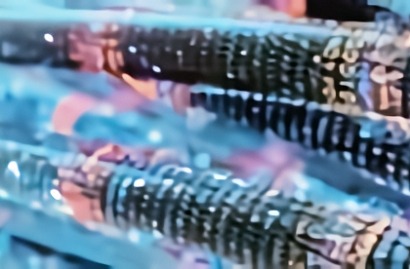
The compelling insight is from the latest DNV white paper, “ASEAN Interconnector Study: Taking a Regional Approach to Decarbonisation”, released today (16th April), which meticulously evaluates the advantages of a unified regional strategy towards decarbonising the power sector, while also addressing hurdles such as efficiently integrating the substantial influx of renewable energy.
“Decarbonisation is a global challenge and ASEAN countries should not address this individually” said Mats de Ronde, Team Lead, Energy Markets & Strategy APAC, Energy Systems at DNV. “With increased cooperation and resource sharing we can increase the speed of the energy transition while reducing the cost to consumers and the environment.”
The aspiration to achieve net-zero carbon emissions by 2050 is widely shared among the ASEAN member states. Alongside this vision, there exists a longstanding goal to establish an ASEAN Power Grid, aimed at meeting the region's burgeoning energy needs while bolstering energy security.This ASEAN Power Grid could be used to support decarbonisation efforts by transporting clean energy from countries with excess renewable power to countries with shortages. However, most decarbonisation efforts to date remain confined to individual nations.
DNV models three scenarios for a decarbonised ASEAN power sector by 2050: In one (‘Individual Approach’), countries try to fully decarbonise alone from their own resources. In another (‘Moderate Interconnection’), based on the ‘ASEAN RE Target Case’ in the ASEAN Interconnection Masterplan Study Phase III, there are several cross-border power interconnectors but with limited transmission capacity and no hydrogen network. The third DNV scenario (Regional Cooperation) envisages full, unconstrained resource-sharing between countries, involving power interconnectors and hydrogen networks.
The study underscores that the primary advantage of Regional Cooperation lies in minimising the necessary levels of renewable generation and energy storage to attain net zero, thanks to the enhanced utilisation and sharing of resources from regions abundant in renewable potential.
The paper concludes, such collaborative efforts can yield substantial cost savings, optimise material resource utilisation, and reduce the land footprint required for renewable energy development. DNV estimates that Regional Cooperation can cut $800 billion (approximately 11 percent) from the overall net present cost of ASEAN decarbonization by 2050 compared with the Individual Approach, and $300 billion (approximately 5 percent) compared with Moderate Interconnection.
Drawing on its findings and on discussions with stakeholders, the study makes concrete recommendations on how technical, economic, and policy hurdles to decarbonisation can be resolved in achievable chunks in the short, medium, and long terms.
“At DNV we aim to support the energy sector with insights to achieve a clean, affordable and reliable energy transition” added Brice Le Gallo, Vice President and Regional Director APAC, Energy Systems at DNV. “We hope that stakeholders in the ASEAN power sector find the paper useful and helps them transition faster. Our study forecasts power flow between ASEAN countries and regions under different scenarios. A key finding is that Moderate Interconnection offers substantial cost savings and requires limited interconnectors, meaning less resources and investment. This can be seen as a moderate step towards decarbonisation as key stakeholders recognise the benefits of cross-border interconnectors.”
For additional information:

